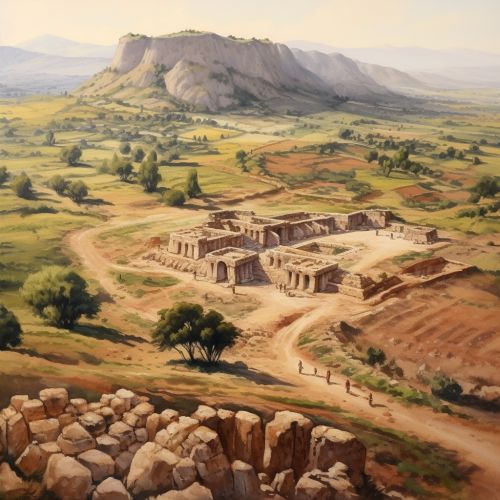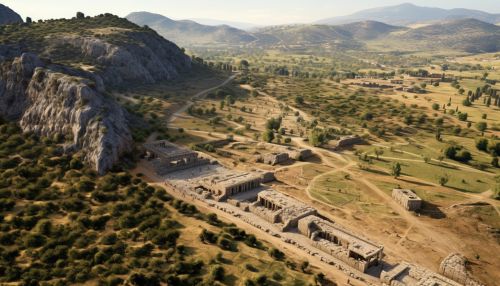Tiryns
Overview
Tiryns is an ancient archaeological site located near the east coast of the Peloponnese in Greece. The site is known for its Mycenaean-era fortifications, which are some of the most impressive examples of Mycenaean architecture. The fortified palace complex of Tiryns is considered a classic example of the Mycenaean civilization and has been recognized as a UNESCO World Heritage Site.


History
The earliest evidence of human occupation at Tiryns dates back to the Neolithic period. However, the site reached its peak during the Late Bronze Age (1600-1100 BC), when it became one of the most important centers of the Mycenaean civilization. The Mycenaeans were a powerful Bronze Age culture that dominated the eastern Mediterranean.
During this period, Tiryns was renowned for its massive fortifications, which were constructed using a technique known as Cyclopean masonry. This technique involved the use of large, irregularly shaped boulders, which were fitted together without the use of mortar. The walls of Tiryns are a prime example of this technique, with some of the boulders weighing up to 13 tons.
Archaeological Excavations
The site of Tiryns has been the subject of archaeological investigation for over a century. The first systematic excavations were carried out by the German Archaeological Institute in the late 19th century, under the direction of Heinrich Schliemann, the archaeologist who also excavated the site of Mycenae. These early excavations revealed the impressive fortifications and palace complex of the Mycenaean period.
Subsequent excavations have provided further insights into the history and development of Tiryns. These investigations have revealed evidence of continuous occupation from the Neolithic period through to the Hellenistic period, demonstrating the long-term significance of the site.
Architecture and Fortifications
The architecture of Tiryns is characterized by its massive fortifications, which are considered some of the best-preserved examples of Mycenaean defensive architecture. The fortifications encompass an area of approximately 20 hectares and include several notable features.
The most impressive part of the fortifications is the so-called "Cyclopean Walls". These walls, constructed using the Cyclopean masonry technique, are up to 8 meters thick and 13 meters high. The term "Cyclopean" was coined by the ancient Greeks, who believed that only the mythical Cyclopes could have moved the massive boulders used in the construction of the walls.
Within the fortified area is the palace complex, which includes a central megaron, or great hall, as well as various other buildings and courtyards. The megaron was the focal point of the palace and was used for ceremonial purposes. It was characterized by its large size and elaborate decoration, including frescoes depicting various scenes from Mycenaean mythology.
Significance and Legacy
The archaeological site of Tiryns provides valuable insights into the Mycenaean civilization, one of the key cultures of the Bronze Age Mediterranean. The impressive fortifications and palace complex of Tiryns are testament to the architectural and engineering skills of the Mycenaeans, as well as their military power.
Tiryns is also significant for its association with ancient Greek mythology. According to myth, Tiryns was the birthplace of the hero Hercules, and the city was said to have been built by the Cyclopes, a race of one-eyed giants.
In recognition of its historical and cultural significance, Tiryns was inscribed on the UNESCO World Heritage List in 1999, along with the nearby site of Mycenae.
